November 2008 | A few weeks ago, we asked many of you to email us a trend-related question. So, as promised, here's the aggregated Top 15 Trend Questions (and Answers) that will hopefully address some of the most pressing trend issues you’re facing.
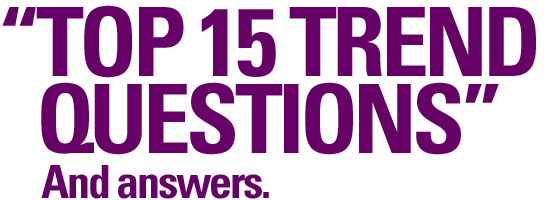

The Oracle of Delphi we’re not, but still…
- Q15: “How do I spot and apply trends?”
- Q14: “What are good trend resources?”
- Q13: “What will be the next Facebook or Google?”
- Q12: “What’s next for <insert demographic/tribe>?”
- Q11: “So how does PERKONOMICS relate to…?”
- Q10: ”What trends are affecting <insert your industry/sector>?”
- Q9: “How do I know a trend isn’t just a fad?”
- Q8: “When is the right time to act on a trend?”
- Q7: “What are the trends in <insert emerging market>?”
- Q6: “Who sets trends?”
- Q5: “How do I become a (better) trend watcher?”
- Q4: “How much influence do trend watchers have?”
- Q3: “What is a trend’s life cycle?”
- Q2: “What’s going to be big in 2009?”
- Q1: “How is the financial crisis going to impact my business?”


How to apply trends remains the sweet spot
 OK, let’s start with the basics. One of the questions asked most often was about spotting and applying trends. Yes, this is the sweet spot, the holy grail of trend watching: how to spot and what to do with your findings!
OK, let’s start with the basics. One of the questions asked most often was about spotting and applying trends. Yes, this is the sweet spot, the holy grail of trend watching: how to spot and what to do with your findings!
We’ve actually dedicated a whole section on our site to this challenge and opportunity: check out our Tips section at www.trendwatching.com/tips.
The spotting part is too extensive to recap in a few sentences, but here’s the 1-minute version on how to apply trends:
Ask yourself if a trend you're tracking has the potential to:
- Influence or shape your company's vision.
- Inspire you to come up with a new business concept, an entirely new venture, a new brand.
- Add a new product, service or experience for a certain customer segment.
- Speak the language of those consumers already 'living' a trend: show them you know what they're excited about. In your campaigns, your branding, your conversations.
That's all there is to applying trends ;-) Seriously though: don't be too earnest about the quest at hand: it's about coming up with exciting new products and services for your customers, nothing more and nothing less.

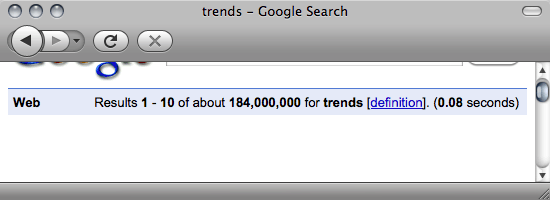
 Trend watching as a discipline has radically changed over the last five years. In a world that's fully connected, where thousands of smart professionals and amateurs are not only spotting, observing, thinking and innovating, but also putting their findings online for all to see, valuable resources are up for grabs.
Trend watching as a discipline has radically changed over the last five years. In a world that's fully connected, where thousands of smart professionals and amateurs are not only spotting, observing, thinking and innovating, but also putting their findings online for all to see, valuable resources are up for grabs.
So stop moaning about information overload and instead celebrate the incredible wealth of trend resources at your fingertips, many of them free or dirt cheap. Check out our extensive checklist* of where to spot changes in consumer behavior, new trendsetting products or just super-smart thinking on where our societies are headed.
* We naturally encourage you to explore trendwatching.com's previous Trend Briefings (free!) and our Annual Trend Reports (not free). But also spend a few days on trend sites like PFSK, Springwise New Business Ideas, Iconoculture, Influx Insights, and Agenda Inc. Just sign up for their newsletters and feeds. They will yield enough material to start building your Trend Framework.


The view from Google co-founder Sergey Brin’s new $8.5 million duplex Manhattan penthouse
 Believe us, if we knew, we’d be working on it right now. There’s only one way to get an answer to this one: create the Next Big Thing yourself. How? By religiously tracking consumer trends and coming up with a winning innovation that plays into changing habits, or even unlocks existing needs in completely new and profitable ways.
Believe us, if we knew, we’d be working on it right now. There’s only one way to get an answer to this one: create the Next Big Thing yourself. How? By religiously tracking consumer trends and coming up with a winning innovation that plays into changing habits, or even unlocks existing needs in completely new and profitable ways.
Overly simplistic? Maybe. But then again, there are people out there building, designing and starting Next Big Things on a daily basis. Why not you?
Here’s one hands-on source to help you out a bit: our sister site Springwise, which reports on new, promising ventures from around the world. Have fun!


 We can tell from your questions that you continue to be deeply interested in demographics, tribes, lifestyles and so on. Baby boomers! Youth! Gays! Women! Ethnic minorities! Any kind of minority! We don’t blame you: demographics—and all of the specific needs and wants associated with them—are an endless source of innovation.
We can tell from your questions that you continue to be deeply interested in demographics, tribes, lifestyles and so on. Baby boomers! Youth! Gays! Women! Ethnic minorities! Any kind of minority! We don’t blame you: demographics—and all of the specific needs and wants associated with them—are an endless source of innovation.
BUT… When it comes to demographics, you already seem to know what’s happening in the communities you hope to serve. For example, to us, a question like "How will youth’s total obsession with all things digital impact traditional newspapers?" isn’t really a question, it's a statement. And there’s much to know about demographics, as witnessed by the staggering amount of published research.
So we feel we don't have that much to add. What you have to do, is to continue to engage in conversations with your targeted demographic or tribe, and then focus on creating new products, services and experiences for your audience. Yes, keep a close eye on the many blogs dedicated to each lifestyle and tribe, too. But really, no super-expensive trend watchers needed for this one ;-)


‘New’ perks are more about empathy than about miles
We received quite a few questions about about PERKONOMICS, which was featured in our previous Trend Briefing. An overview:
Q: “How do perks sit with the current economic downturn?”
A: In challenging times, any perk that is about empathy will be appreciated. For more on how to make the most of a downturn, see question 1.
Q: “How can luxury brands offer perks if they already offer status?”
A: They should offer perks that are about different kinds of status. Visibly flaunting a label or a brand is no longer enough: access is the new status for those who already possesses the goods. Which is why perks like insider info, jumping the queue, after-hours openings, even reserved parking spots are so valued by luxury consumers.
Q: “Aren’t most perks just old wine in new bottles?”
A: This is what we said in the briefing: "Another non-perk: turning previously free, completely accessible services into pseudo-perks, if not paid perks. This is a dubious practice: witness perk-pioneers like airlines now introducing all kinds of payment and perk schemes for simply checking in luggage, while in the past this was a free service. The same goes for making previously accessible-to-all customer service only available to top-tier clients."
Q: “How can perks offer exclusivity if you're making them widely available?”
A: Many of the examples in the briefing weren’t necessarily about offering individual customers complete exclusivity, but about delighting all of your customers, at the expense of non-customers. From O2 customers being able to book coveted concerts tickets before Vodafone and T-Mobile customers can, to being offered luxury loos at muddy festivals if you're a MasterCard customer.
P.S. For another (though not necessarily endorsed-by-us) take on this trend, check out the article on PERKONOMICS in The Independent.


To understand industry trends, you need to understand consumer trends
 Yes, yes, we know, what you really want to hear about is trends affecting your industry or sector. Be it wind energy, goat’s milk, alarm clocks, holiday resorts or gift wrap. The thing is, the trends that will impact your industry most are… consumer trends. And crucial customer experiences and thus expectations may well be set in industries other than your own.
Yes, yes, we know, what you really want to hear about is trends affecting your industry or sector. Be it wind energy, goat’s milk, alarm clocks, holiday resorts or gift wrap. The thing is, the trends that will impact your industry most are… consumer trends. And crucial customer experiences and thus expectations may well be set in industries other than your own.
So while we would have to refer to specialized market research firms for questions like ‘what growth percentage is expected for selling virgin olive oils to 30–35 year olds in Sweden’, we are confident that by scanning our consumer trends, you will be able to understand where your industry may be headed, or even better, shape its direction yourself, by introducing new products and services that catch the competition off guard. (See also question 15 about applying trends.)
We actually dedicated an entire briefing to how consumer trends trump industry trends: check out EXPECTATION ECONOMY. The two-minute version:

- Your competition could be anyone. First of all, focusing solely on your own industry will obscure the fact that in economies of abundance, consumers are increasingly spending their 'play money' on goods and services that net them the experience, the indulgence, the excitement, the satisfaction they're looking for at a specific moment. Which could be new sneakers (even though they already own five pairs), or a new cell phone (even though their current one is perfectly fine) or a long weekend away (even though, if they're European, it's probably their fourth getaway this year). So if you're, let's say, Nike, you're definitely competing with Reebok and Adidas and Onitsuka Tiger once a consumer has made up his or her mind that it's sneakers he or she desperately wants. But before minds are made up, when shopping for a certain kind of excitement, it may as well be Nokia or Starwood Hotels. Or Zara. Increasingly, you'll be competing with anyone and everyone, which means you need to keep an eye on anyone and everyone.

- Consumer expectations are often set outside your own industry. Limiting yourself to your own industry will make you miss important changes in consumer expectations, and will thus put you at risk of disappointing or even annoying consumers. Every industry has its own 'innovation competence', and the innovations they're bringing to market not only excite their own customers, they also shape their expectations for other industries. Whether it's Singapore Airlines' sense of status, IKEA's understanding of the democratization of design, H&M's obsession with making up-to-the-minute fashion affordable, or Apple's prowess in design and usability. And while flawless execution is never easy, the thinking and attitude behind it isn't impossible to mirror. Consumers know this, too. Hence their aforementioned indifference and irritation when it comes to the non-H&Ms, the non-Singapore Airlines, the non-Apples.


A product doesn’t necessarily equal a trend
 Fads versus trends: let’s first define a trend. This is what we came up with a while ago, and it still holds up pretty well:
Fads versus trends: let’s first define a trend. This is what we came up with a while ago, and it still holds up pretty well:
"A manifestation of something that has unlocked or newly serviced an existing (and hardly ever changing) consumer need,* desire, want, or value."
At the core of this statement is the assumption that human beings, and thus consumers, don't change much. Their deep needs remain the same, yet can be unlocked or newly serviced. The 'unlockers' can be anything from changes in societal norms and values, to a breakthrough in technology, to a rise in prosperity.
Example? One of the core human needs is to be in control, or at least to have the illusion of being in control. No wonder then, that the still-evolving online world is so addictive. After all, it firmly puts the individual in the driver's seat.
Back to fads, then. First of all, declaring (for example) Crocs an emerging consumer trend is somewhat strange. It’s certainly a popular product, but it won't dramatically change the consumer arena. At most, it's yet another manifestation of consumers wanting convenience no matter what, and that yes, even though individualization is the new religion, sometimes people still want something that their peers have. Convenience versus style, and sameness versus uniqueness, those are ‘trends’. The product isn’t. Whether something like Crocs will endure is for you to figure out. If it doesn’t, it certainly was a successful fad ;-)
* P.S. Need to brush up on your knowledge of human needs? Re-reading Maslow's Hierarchy of Needs never hurts.


Stop worrying and get going
 Some of you really like to bite nails or bury your head in your hands when it comes to timing and when to act on certain trends. Biggest concern seems to be the local adaptability of a trend ‘from somewhere else’, i.e. ‘will it work here, and if so, when?’ May we humbly suggest you stop worrying?
Some of you really like to bite nails or bury your head in your hands when it comes to timing and when to act on certain trends. Biggest concern seems to be the local adaptability of a trend ‘from somewhere else’, i.e. ‘will it work here, and if so, when?’ May we humbly suggest you stop worrying?
- First of all, why limit yourself to one market or country? If you think your ‘own’ country isn’t ready for a trend, why not introduce it to another country that is ready? It's a global marketplace out there.
- Secondly, you only have to dive into one of the many global youth tribe studies (for example, expect to hear lots about MTV's new study on 'threenagers') to find further proof that when it comes to brands, when it comes to consumption, the similarities worldwide far outnumber the differences. It's a total cliché, but yes, younger consumers are well-connected and well-informed, and treat the global marketplace as a smorgasbord of best-of-the-best delicacies. A taste of things to come if we've ever seen one.
- Thirdly, you won’t have to worry about readiness in a specific market if you instead carefully prepare for when it happens, while learning best practices from those already applying the trend elsewhere. Just keep your costs down while waiting and learning ;-)
Basically, either think big by taking something global, or think small, while learning and not spending too much money.


Is this India, Brazil, Turkey or South Africa? Place your bets!
 OK, so what are the major consumer trends in emerging markets like Brazil, India, South Africa, Vietnam, Mexico, Turkey and so on? How are they different from trends in ‘mature’ consumer societies like Canada, Austria or Japan? Why don’t we do country-specific reports?
OK, so what are the major consumer trends in emerging markets like Brazil, India, South Africa, Vietnam, Mexico, Turkey and so on? How are they different from trends in ‘mature’ consumer societies like Canada, Austria or Japan? Why don’t we do country-specific reports?
This remains a popular question, often driven by the belief that things in emerging nations are completely different, even mystifyingly so. Our standard answers can be summed up as follows (and let’s take Brazil as an example):
- We study emerging consumer trends on a global scale. This means we don’t focus on specific countries, we just look for new manifestations of existing human needs and wants that have been unlocked—somewhere, anywhere. So it’s all about first signs of shifts in consumer behavior and preferences that have the potential to be embraced by similar consumers in other countries/regions. If something truly new manifests itself in Brazil, with the potential to become a hit with other consumers around the world, it’s of interest to us and to our readers worldwide, who will want to learn from it, copy it, improve on it and so on. And thus those are the trends you will read about in our monthly briefings and our annual report.
- On the other hand, if an existing trend is picked up in Brazil, we’re mostly interested in whether Brazilian entrepreneurs are doing something surprising with it that may interest our readers elsewhere who are also interested in making the most of that specific trend.
- Now, it’s a given that consumer trends are global these days. Cultures are far from global, but consumer behavior, especially among (emerging) middle classes is pretty universal.* The uptake may differ in pace and timing, but in the long term, an IKEA couch is what everyone covets ;-) Don’t agree? Are you convinced that we "just don’t understand, things are very different here"? Then show us all those trends, all those products that started 10 years ago and have not caught on in any possible shape or form in your country. We dare to predict that you can’t come up with more than one or two.
* Low-income consumers tend to value the same things worldwide, middle class consumers ditto, and yes, the super-rich exhibit herd-like behavior, too.
In fact, the current consumption spheres look something like this: consumers with very little money, looking to secure the basics and trying to survive; consumers with growing incomes believing in the ‘you are what you buy’ dream; the super-rich who are still scrambling to outdo each other in true extravaganza; a new breed of middle-class consumers with nice, steady incomes trying to figure out what comes next after buying the most and the best, looking for a more sustainable, softer form of consumerism, and last but not least some pockets of consumers trying to shed the consumer-label altogether, focusing instead on being creators, or, yes, citizens again ('being' instead of 'having').

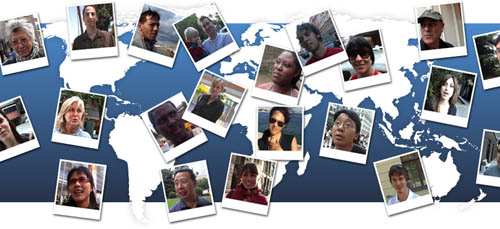
It’s about individuals
 Closely related to question 7 is this one: do countries set trends? Do regions? Do governments? Do brands? Do consumers? The answer is: yes. All of them do.
Closely related to question 7 is this one: do countries set trends? Do regions? Do governments? Do brands? Do consumers? The answer is: yes. All of them do.
If we look one more time at our aforementioned definition of a consumer trend:
“A manifestation of something that has unlocked or newly serviced an existing (and hardly ever changing) consumer need, desire, want, or value”
and we agree on ‘unlockers' being anything from a change in societal norms and values, to a breakthrough in technology, to a rise in prosperity, then it’s easy to see how trends can and will emerge all over the place. In the end, it's all about ideas, ideas that translate—to technologies, to revolutions, to products—and ideas that spread.
Which brings us to the following: larger entities like countries or cultures or brands that are setting trends are of course all dependent on individuals who set things in motion. So rejoice: anyone can be a trend setter.

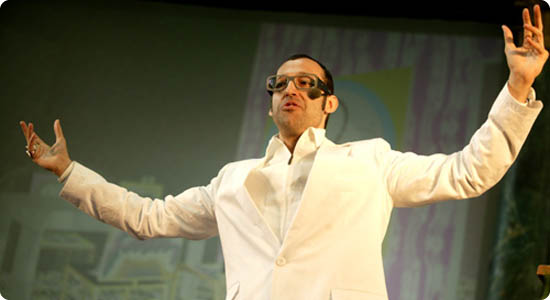
Karim Rashid has the trend watcher look down to perfection ;-)
 It’s pretty easy, really. Just don black glasses, wear outrageous suits, attend lots of conferences and frequently declare something ‘over’, except anything that currently resonates in your own life. You also need to possess some kind of divine intuition.
It’s pretty easy, really. Just don black glasses, wear outrageous suits, attend lots of conferences and frequently declare something ‘over’, except anything that currently resonates in your own life. You also need to possess some kind of divine intuition.
Just kidding. It’s really all about observing the world around you with an open mind, which is, sadly, something many professionals have unlearned. It’s not something they aren't born with. If you want to spot trends, you can. We actually did an extensive posting on the traits of a trend watcher here.
The five-minute version:
- First of all, make sure you acquire a point of view about the world around you. The more trends you spot and track, and the more skilled you are at putting these trends in a context, the more guidance you'll have.
- Crucial to broadening your point of view: be curious and be open minded. Not an easy thing to do. We're all set in our ways, we all have our strict beliefs about what is right and what is wrong. Ask yourself 'why' whenever you notice something new, instead of immediately looking for shortcomings.
- Also realize that you are not necessarily your customer: your professional interests should be broader than your personal interests. You may not be excited by something new, but others are. Ask yourself why they are excited and which existing need has apparently been unlocked.
- Stop being 'just' a specialist and aim to become a generalist. Yes, we all need to be a specialist in something. However, we also need to be generalists, to understand the big picture and how we and our companies and products fit in.


On our way to yet another marketing conference ;-)
 It would be nice to believe that trend watchers make or break brands. But of course they don’t. They merely facilitate. They deliver insights, examples and conversation starters that may spark the Next Big Thing for marketers and entrepreneurs who successfully translate those nuggets to their own brand, their own business. It helps that they move in multiple circles, as opposed to most business professionals who tend to be (too) focused on their own industry (see question 10). Basically, they do the kind of work that YOU should be doing but don’t have enough time for.
It would be nice to believe that trend watchers make or break brands. But of course they don’t. They merely facilitate. They deliver insights, examples and conversation starters that may spark the Next Big Thing for marketers and entrepreneurs who successfully translate those nuggets to their own brand, their own business. It helps that they move in multiple circles, as opposed to most business professionals who tend to be (too) focused on their own industry (see question 10). Basically, they do the kind of work that YOU should be doing but don’t have enough time for.
Now, as some of you asked, doesn’t the pulling together of disparate examples and naming them, and then propagating that idea to brands, actually create the trends you describe? Our answer: while that may occur, it’s still only accelerating something that is already happening. So yes, a trend watcher’s influence can be substantial, but only indirectly, and only based on real-world developments. All pretty servile, really.
Which is important to take into account if you find (or fancy) yourself your organization's de facto trend watcher: you're a facilitator, so don't make it a one (wo)man show. Instead, be the messenger, the humble reporter. Show real-world examples of how other firms are already cashing in on a specific trend. Point out what respected brands are doing, including as many direct competitors as possible. (Even though we've argued against too much industry focus in question 10, when it comes to your mindset, showing what the competition is doing is great wake-up-call material.) What it comes down to is that if you can appeal to the dreams and desires of others—read: anything that includes more money, more prestige, more status—you'll get more support, and thus have more influence.


Most trends don’t die; they evolve
 First of all, the consumer trends we tend to highlight are part of such broad shifts in what constitutes value and status to consumers, that none of them die within months, not even years. In fact, over the last six years, none of the trends in our briefings have disappeared. They DO evolve of course. Which brings us to our second point about life cycles: if you religiously track all major consumer trends, you will no longer have to think in life cycles, as you will be tracking an overall picture based on evolving developments.
First of all, the consumer trends we tend to highlight are part of such broad shifts in what constitutes value and status to consumers, that none of them die within months, not even years. In fact, over the last six years, none of the trends in our briefings have disappeared. They DO evolve of course. Which brings us to our second point about life cycles: if you religiously track all major consumer trends, you will no longer have to think in life cycles, as you will be tracking an overall picture based on evolving developments.
Last but not least, the new doesn't always kill the old. E-commerce may be booming, but real-world retail is far from dead. Has the latter changed? Sure. But take one look at excited shoppers and TRYSUMERS who spend hours in Apple's flagship store in Manhattan, and it becomes clear that both online and offline retail have many years of innovation and opportunity ahead of them.

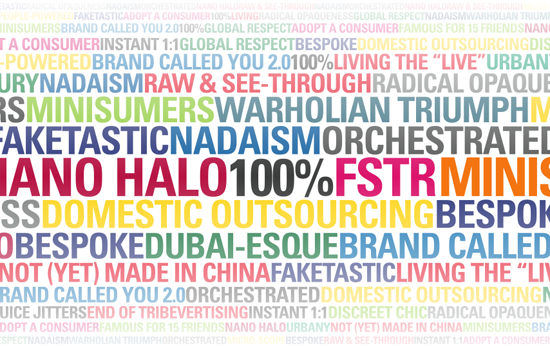
 Funny you should ask ;-)
Funny you should ask ;-)
For this one, we’re going to refer you to our Premium Service*.
This service, which includes a 2010 Trend Report and 12 months of access to an ever-expanding Trend Database, highlights dozens of emerging consumer trends that will define the next 12 months.
More at www.trendwatching.com/premium »
* That’s right, we actually don’t give away everything for free; we do charge for our premium product aimed at business professionals who want it all. And yes, that's a trend, too ;-)


 Not surprisingly, this question arrived in our inbox, in every possible variation, about 600 times. Where to begin?
Not surprisingly, this question arrived in our inbox, in every possible variation, about 600 times. Where to begin?
Perhaps with stating that yes, many parts of the world will soon find themselves—or are already finding themselves—in a recession, and yes, this will seriously influence consumer behavior in the short term. Long term, a recession may have a much smaller impact on broad consumer trends than often expected: the broad changes in what constitutes status over the last 40 years have been steadily building, influenced but not stopped by the various busts along the way.
Anyway, for the here and now, here's an overview of the various 'recession' related questions we received:

Q: “Will consumers cut down on luxury, high-ticket items?”
A: To ask the question is to answer it. Of course they will. Expect numerous reports on the (temporary) demise of luxury, except in regions where emerging middle classes still depend on flaunting luxury brands for recognition. Oh, and the absurdly rich will continue to spend heavily too, just because they can. Numbers and predictions can be found here, in a recent Bain & Co report on the slowdown in the luxury sector.

Q: “So what will happen to your PREMIUMIZATION trend?”
A: It’s still a force (witness another recent, yet by now almost tired, play on premium water by Evian and Jean Paul Gaultier), but needless to say the focus within premium products will shift towards the useful and comforting, versus the frivolous if not outrageous slant of pre-downturn times. And one thing to keep in mind, recession or no recession: one generation's luxury will be another generation's necessity.
Meanwhile, what we will be looking out for is a prolonged appreciation of golden-oldie trend NO-FRILLS CHIC: well-designed yet affordable products and services. This trend will continue to boom: while affordable chic in good times allowed consumers to consume even more in style (think being able to squeeze in yet another city-trip thanks to the like of Qbic and Yotel hotels), they now provide a stylish alternative to cheap-but-sad offerings for the only city-trip people may be booking this year.
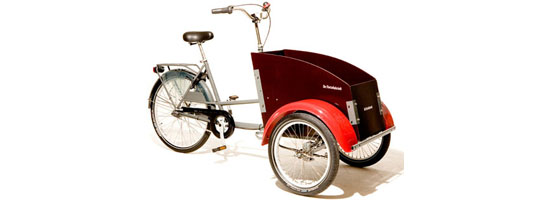
Q: “Is ‘eco’ still going to be big?”
A: Why not? Sure, certain overpriced organic nic- to-haves will suffer, but we’ll most likely see a surge in what we’ve dubbed ECO-CHEAP: cash-strapped consumers going out of their way to save money on energy bills, motorized transport and other waste-prone, eco-unfriendly activities. While the environment may not be their first concern, there will be less polluting nevertheless.
Quite ironic of course is the rapidly sinking price of oil, due to less economic activity around the world, which in turn lowers the price of energy and fuel and therefore discourages (at least for the moment) new and costly investments in renewable energy sources. We guess you can’t have it all.
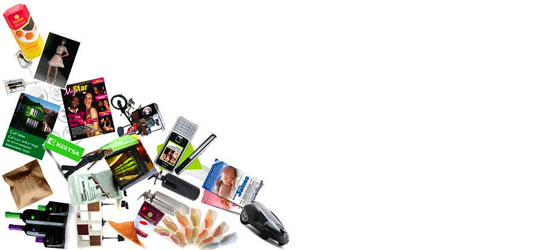
Q: “Is this a good time to focus on innovation?”
A: Any time is a good time to focus on innovation. If you're doing well, you need to continue to innovate to ward off the inevitable competition, and if you're not doing so well, you're obviously not going to crawl out of your mess by downsizing and sitting still. So basically, as necessity is the mother of invention, expect to see a whole lot of innovations popping up in the next 12 months as smart people are suddenly forced to give it all they've got, with despair and dwindling resources setting new ways of thinking in motion. The impetus to innovate is every recession's silver lining.

Q: “What about entertainment in difficult times?”
A: People will look for diversions, for (affordable) experiences that will make them temporarily forget any kind of misery that has come their way. Will cocooning or INSPERIENCES boom? Of course. Are Microsoft and Sony and Nintendo salivating over staycation-induced game riches? Yup, yup.
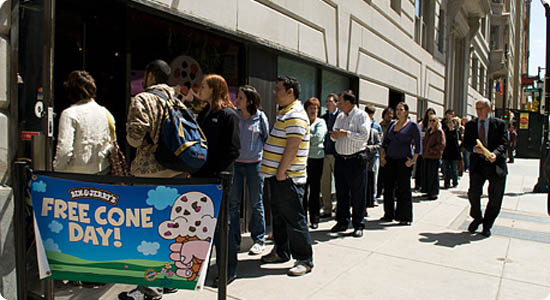
Q: “And FREE LOVE?”
A: Anything that is free will obviously be in demand, but ‘free’ business models supported by ad revenues may feel the pain, as ad spending will decrease if companies curb spending (something to avoid if possible, of course.)

Q: “And indulgences?”
A: Big indulgences will be out (they'll be either too expensive or too flashy, or both), small ones will be in, to lighten the hardship. However, frequently-occurring small indulgences may take a hit, as total expenditures on those do add up. Think people's daily Starbucks fix.
And on and on it goes. It's all pretty common sense and moreover, it's been researched to death. For a semi-scientific take, check out this article from The New York Times. And for a hilarious-yet-very-true take, check out Jezebel’s 'Idiot's Guide To The Recession', outlining how consumers can weather challenging times.
So… the golden trend tip for brands in a downturn? Care about your customers. Deliver. Sympathize. Surprise them. Talk to them. Give to them. It’s BRAND BUTLERS, FREE LOVE, SYMPVERTISING and so on. Hey, that’s what you should be doing during an upturn, too ;-) Happy spotting!
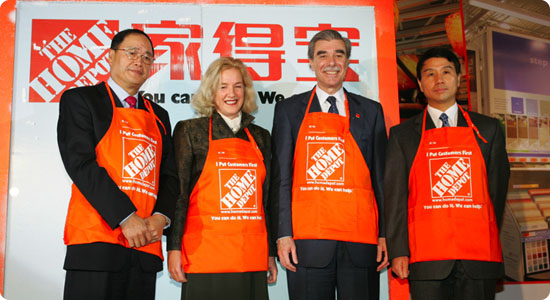
Some of this you will have to figure out yourself
Now, while we answered the majority of questions with the above 15 answers—albeit in an aggegrated fashion—some of the questions were just beyond the scope of our expertise or reach.
A summary:
- We’re really about consumer trends. So specific questions about trends in B2B are better addressed by others. Business to Business Marketing Magazine is a good place to start.
- Some questions were more about market research then broad consumer trends (i.e. what percentage of food & beverage expenditures in 2010 will go to organic foods). Check out firms like Datamonitor who specialize in this kind of research.
- Quite a few questions were about marketing and branding fundamentals, i.e. the truths that hold when selling and interacting with consumers, regardless of what trends are involved. Our favorite site for this kind of info (with a good trend component too!) is still Seth Godin’s blog.
- As we’re not about 'hard-core' futurism, but rather the short-term version (i.e. understanding what's already happening, the major and the minor), we’re not the best people to ask what’s going to happen in 2025. A good starting point for this is Wikipedia’s take on futurism.
- Last but not least, some of the questions weren’t really questions. They were well-informed, insightful statements, for which the askers were perhaps looking to get validation or confirmation. Which is unnecessary: a small but key element of trend watching is to be confident about your own observations. View trend watching as a heavy dose of research and thinking, mixed with a pinch of gut feel. With execution as the only goal. Amen.